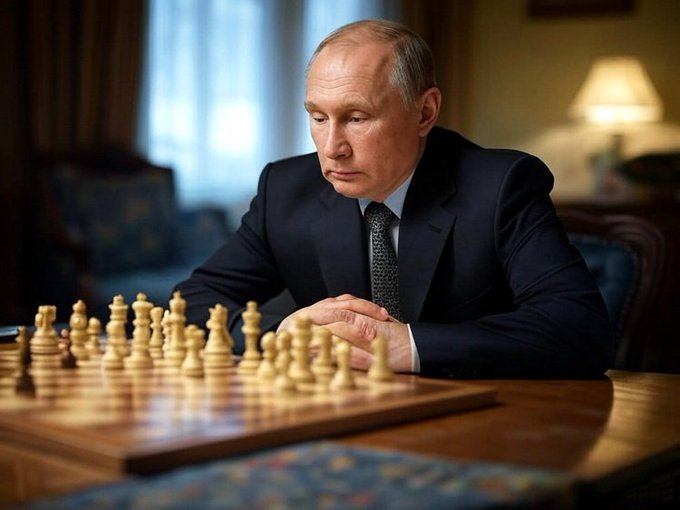Introduction
The Russia-Ukraine conflict enters its 1,238th day as of July 16, 2025, with the situation showing no signs of abatement. Russian President Vladimir Putin remains resolute in his campaign, virtually impervious to political shifts in Western capitals, particularly Washington. Despite U.S. attempts at diplomatic pressure and sanctions, reports from the front lines reveal Putin’s unwavering appetite for further territorial gains, suggesting a potentially broader Russian incursion into Ukrainian territory as the war grinds on.
Putin’s Steadfast Approach
An Existential Struggle
For Putin, the war in Ukraine is more than a geopolitical contest—it is framed as an existential struggle against the West and is central to determining Russia’s global stature and his personal legacy. U.S. intelligence assessments highlight that the Russian leader is prepared to sustain the military campaign through at least the remainder of 2025, viewing victory as essential to both his hold on power and Russia’s place in international affairs.
Despite significant military and financial losses, the Kremlin has not deviated from its maximalist objectives, which include:
- Ukrainian neutrality
- Severe restraints on Kyiv’s armed forces
- Permanent exclusion from NATO
Withdrawal of Ukrainian military from the occupied regions of Donetsk, Luhansk, Zaporizhzhia, and Kherson
Ukraine categorically rejects these terms, equating them to outright surrender.
Russian Military Momentum
Recent weeks have witnessed renewed Russian offensives across several axes. Key developments include:
- Russian advances in the Kharkiv, Donetsk, Sumy, and Zaporizhia regions, with villages falling to Russian forces.
- A marked increase in artillery and drone attacks, including strikes resulting in civilian casualties and infrastructure damage in both Ukrainian and Russian territories.
- Record-high barrages of drones and missiles launched by Russian forces, especially following failed ceasefire negotiations.
- Russian battlefield focus shifting to areas where Ukrainian defenses are stretched thin, such as the Pokrovsk and Kupiansk sectors.
U.S. Policy Shifts: Limited Deterrence
Trump’s Ultimatums and Western Pressure
While current U.S. President Donald Trump has attempted to alter the dynamics of American engagement—issuing a 50-day ultimatum demanding Russia agree to a ceasefire or face harsher sanctions—the Kremlin has largely shrugged off these threats.
Key points regardinmentg U.S. involve:
- Announcements of new and more robust military aid to Ukraine, including the delivery of up to 17 Patriot air defense systems and expanded arms production partnerships with European allies.
- Internal delays within the Western alliance regarding additional sanctions, as some EU members hold divergent views on escalation.
- Trump’s rhetoric leans toward pressuring Ukraine to consider negotiations on terms closely mirroring initial Russian demands, spurring concerns in Kyiv about Western resolve.
- Despite the renewed supply of Western military aid, Putin and his closest advisors remain steadfast. Sources familiar with high-level Kremlin thinking indicate that the Russian president perceives no “serious engagement” by Western interlocutors regarding peace terms, and therefore sees little incentive to compromise at this stage.

Escalating Tensions and the Prospect of Further Russian Push
Front Line Dynamics
The situation on the ground is dire for Ukraine:
Russian forces are making incremental but steady advances along the eastern and northern frontiers, backed by relentless artillery, airstrikes, and drone warfare.
Ukrainian civilian infrastructure—railways, schools, and medical facilities—continues to be targeted, further complicating humanitarian relief efforts.
Ukrainian counterattacks have resulted in isolated successes, such as drone strikes deep within Russian territory and limited advances near Novopavlivka and Sumy, but these have not altered the overall battlefield momentum.
In response to Russian advances, Ukrainian President Volodymyr Zelensky has instigated government changes and called for new defensive strategies, highlighting the need for broader international support and increased production of advanced arms—efforts that remain fraught with political and logistical challenges.
The Risk of Further Escalation
Intelligence assessments and independent analysts warn that Russia’s leadership appears undeterred in light of Western actions and is preparing for a prolonged campaign, with the potential to push deeper into Ukrainian-held territory if current trajectories hold. The Kremlin’s confidence in Russia’s endurance—both military and economic—suggests a high risk of additional offensives in the coming months.
Conclusion
The Ukraine crisis stands at a critical juncture. Vladimir Putin’s determination, coupled with the limited effect of U.S. political realignments, signals a protracted and possibly escalating conflict. While Ukraine retains international support and resilience, the relentless pressure from Moscow, and the prospect of further Russian territorial expansion, mean the crisis is far from any meaningful resolution. The world watches anxiously as the fate of Ukraine and the broader security architecture of Europe hang in the balance.

